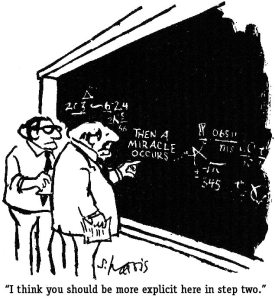Followup To: Approaching Logical Probability
Last time, we required our robot to only assign logical probability of 0 or 1 to statements where it's checked the proof. This flowed from our desire to have a robot that comes to conclusions in limited time. It's also important that this abstract definition has to take into account the pool of statements that our actual robot actually checks. However, this restriction doesn't give us a consistent way to assign numbers to unproven statements - to be consistent we have to put limits on our application of the usual rules of probability.

End of the sequence Logical Uncertainty
Previous Post: Approaching Logical Probability
Just to expand, this example looks deceptively suspicious to humans because the proof is so obvious, even to us, and can be done in a single line using that one rule. For simple arithmetic like this, a robot would be able to prove it immediately after being asked whether 99+99=198 with hardly any time or effort. The procedure is so simple that, in practice, it would be efficient to delay generating the proof until it's asked for. Many human readers will mentally prove it while reading the sentence without even noticing that it took any work to do so. It's so fast that there's no need to guess the answer probabilistically beforehand.
So I'm not sure this example is good for an intuitive illustration that "some unfortunate accident" is going on. It's very strange to run out of time in a procedure that takes so little time to complete, so it's hard to reason about the appropriateness of guessing at circumstance.
Maybe a better example would be, having already proved Pythagoras' theorem, to prove that the body diagonal of a unit cube has length sqrt(3). This might take most humans a little while to think about, and if someone ran a stopwatch and said you have five seconds to decide whether it's true or not, the idea of guessing P=0.5 for something you don't have time to prove might be easier for people to understand. =)